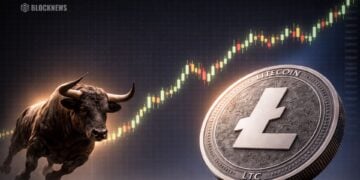- ARK Invest identifies $52,000 and $46,000 as crucial support levels for Bitcoin’s near-term price movements.
- Research indicates that U.S. spot ETF investors may face losses with Bitcoin trading below their average cost basis.
- Despite challenges, certain metrics like the MVRV Z-score suggest Bitcoin still resides in bull market territory.
ARK Invest has pinpointed critical price levels that could significantly influence Bitcoin’s market trajectory. The investment firm’s monthly report outlines $52,000 and $46,000 as essential thresholds that must hold to prevent further declines.
As of the latest review, Bitcoin struggled to maintain momentum, closing August with a nearly 9% loss. The cryptocurrency has deviated from its usual bull market supports, specifically the 200-day moving average and the short-term holder cost basis, which are pegged at $63,693 and $63,245, respectively.
A graph included in the report suggests that the $46,000 level, corresponding to the on-chain mean reversion level, is crucial. This level serves as the final support according to ARK’s analysis, which currently maintains a bearish outlook on Bitcoin.
The report also sheds light on the plight of institutional investors, particularly those involved with U.S. spot Bitcoin ETFs. Launched eight months ago, these ETFs are now witnessing a scenario where the holders’ cost basis exceeds the current price of Bitcoin, suggesting potential unrealized losses for the average ETF investor.
A Glimmer of Hope Amidst Gloom
Despite the concerning data, ARK’s report does not solely forecast doom. It points out several positive market aspects, such as adherence to historical price drawdown norms and a lack of significant liquidations among short-term holders. Furthermore, favorable macroeconomic conditions present some cause for optimism.
The Bitcoin MVRV Z-score, a tool to assess market value relative to realized value, also indicates that Bitcoin might still be in a bull market phase. As of the end of August, the MVRV Z-Score was at 1.6, compared to its average of 1.42, which traditionally marks the boundary between bull and bear markets.














